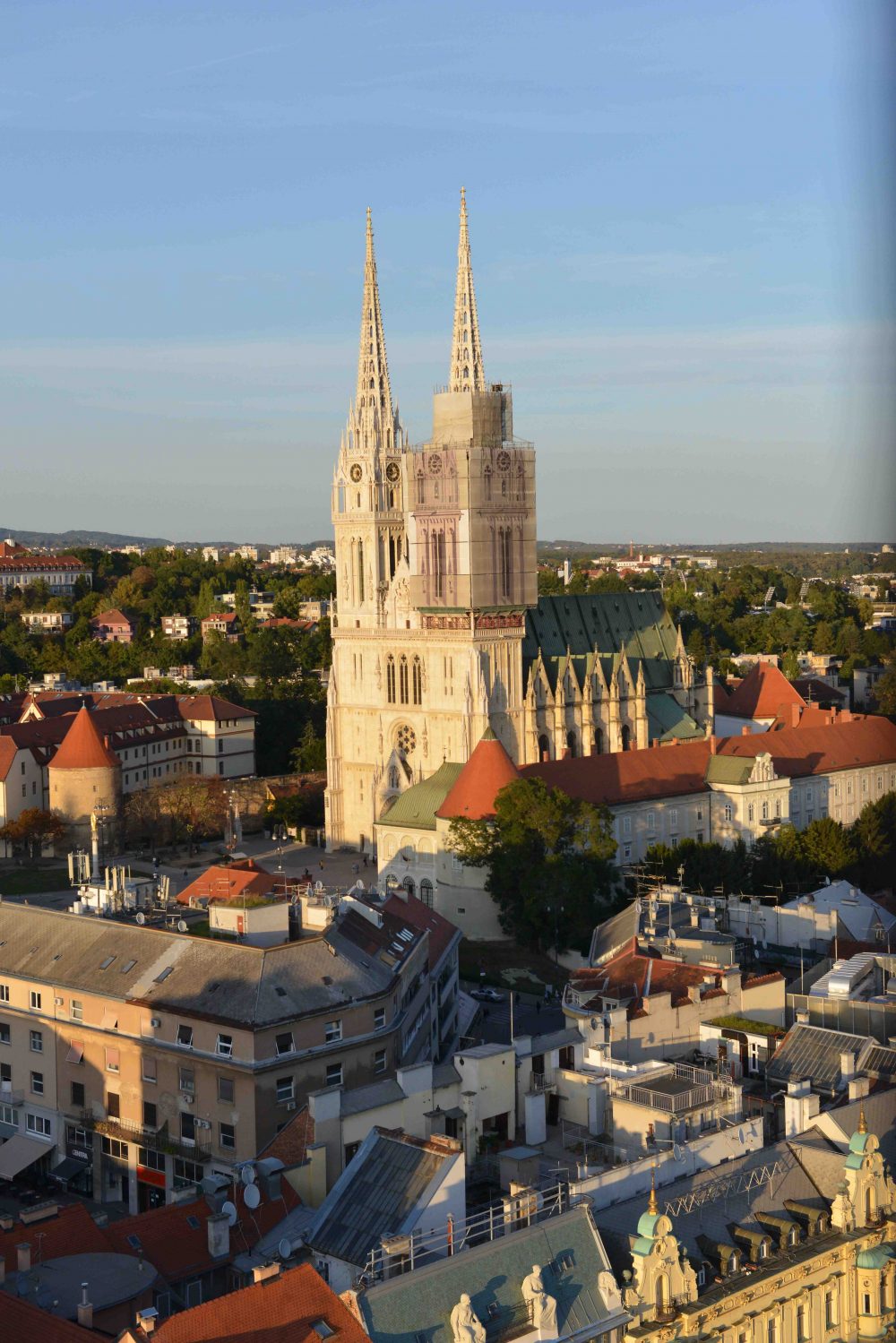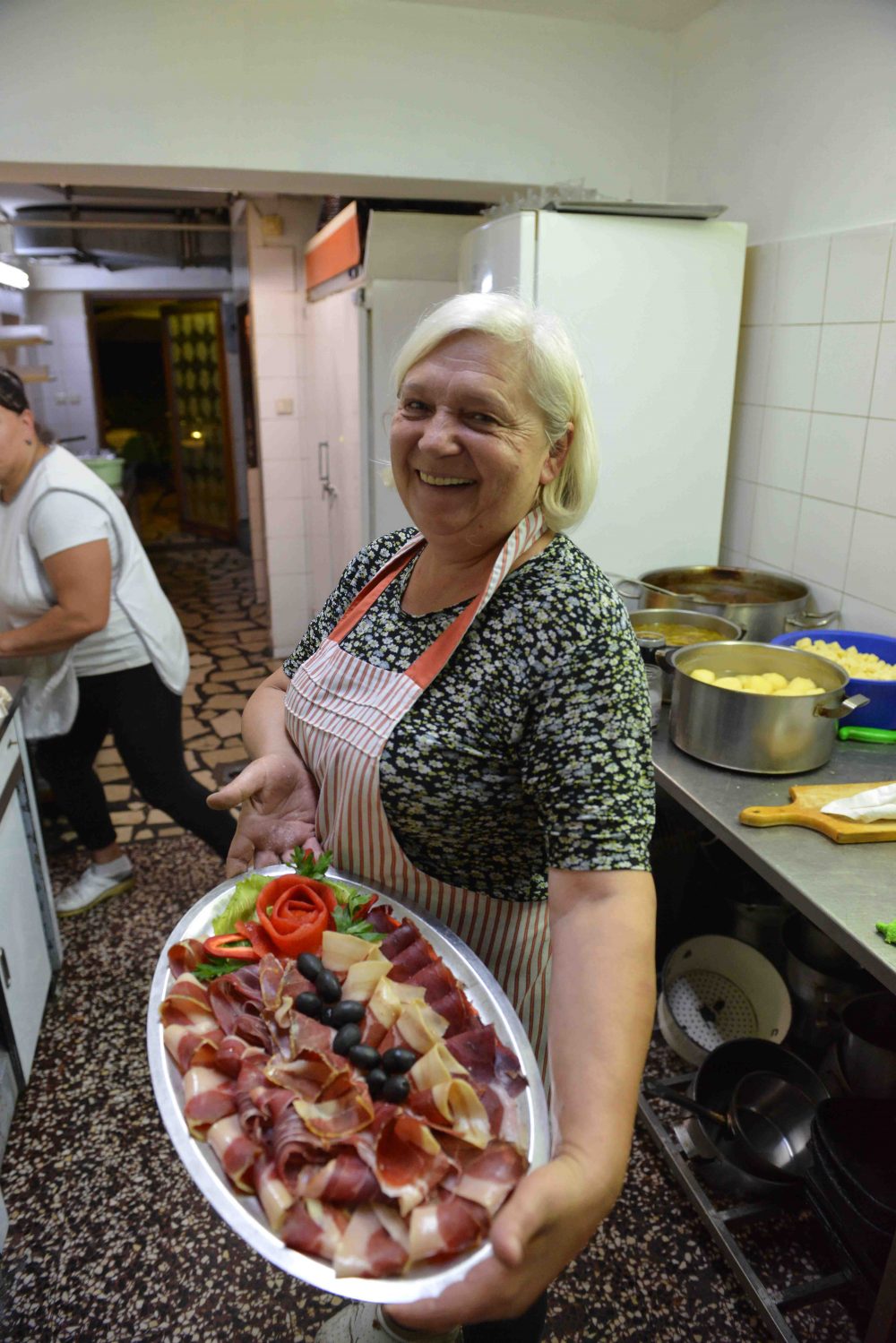
Yuri Gagarin supposedly had eaten at the same table I was seated at, an unassuming affair tucked into the backside of a residential home clinging to one of the numerous hills that define Zagreb. Which made me wonder... had Gagarin—the cosmonaut who was the first human to travel to space—also been subjected to multiple stiff shots of travarica?
Not to say the travarica—a variety of Croatian brandy distilled with up to 20 herbs and berries—was unpleasant. Rather, that when you arrive at a restaurant with an empty stomach and a jet-lagged brain, multiple shots of 90 proof can leave you feeling a bit lost, whether you’ve rocketed into space or merely flown across the Atlantic.
Ivica Miladin would have it no other way. Hospitality is the hallmark of Kod Pere, or Peter’s House, a restaurant opened at least 60 years earlier by his uncle and father at the height of communism in what then was part of Yugoslavia. It was a different place in those years, a gathering spot for dissidents, raids by the secret police common.
The welcoming environment, however, was the same. Though the restaurant struggled those early years—under communism, they were limited to just a few employees and patrons—hungry students always were welcomed and almost never were asked to pay, an opportunity to plan opposition while filling up on the hearty meats that define so much of central Croatian cuisine. It’s a point of pride for Miladin even today, decades after Croatia won independence.
That evening, a 30th high school reunion occupied much of the space, the former classmates insisting Miladin, my photographer and I join them for yet more shots of travarica. Food rolled out of the kitchen in waves that left us in a stupor. Robust salads of cabbage and tomatoes dressed with oil and vinegar. Meaty, yet tender roasted red peppers bathed in oil and peppered with raw garlic.
Then there were gnocchi tossed with pepper-marinated beef, bacon and prunes, all drenched with a red wine sauce. Veal with roasted potatoes, zucchini and more red peppers. Large, irregular noodles tossed with lightly fried duck. Miladin’s specialty—a Croatian “burger”—was a plate-size patty of ground beef and pork set over a bed of french fries, the starchy side sopping up the meaty juices.
Croatia’s complicated history has left it with a delicious amalgam of culinary influences from across the region.
Which is to say, there are few clean lines when it comes to Croatian food. Is it Slavonian, the culturally distinct eastern wedge of the country? Is it Austrian? Hungarian? Turkish? Arab? In short, yes. Croatia’s history—streaked with conflict—has resulted in an amalgam of borrowed influences. Some dishes may incline more to one than another, but influences have mingled long and deep in this country’s mountainous terrain. Teasing out origins can be sticky.
But during a week of exploring the country, two dishes—though perhaps not related, certainly destined to be married on the plate—caught my attention more than others. Perhaps for their simplicity. Perhaps I simply needed a respite from the barrage of meat that dominates Croatian cooking once you leave the coast.
Čobanac, or Slavonian shepherd’s stew, was beefy, brothy and sweetly rich with carrots and dumplings. Yes, it had plenty of meat, but this stew was as much about the broth, which—like so many of the region’s dishes—relied heavily on sweet, peppery paprika. It was the aroma that captivated me, the bold red liquid wafting. Though light, the flavor was vivid and lingering.
And then there was restani krumpir, a seemingly unimpressive lump of mashed potatoes. One bite clarified this was no mere mash. The potatoes, tender and creamy, were studded with caramelized onions, parsley and chives. The result was impossibly rich without being weighed down by too much cream or butter. These were the mashed potatoes of dreams. And don’t even get me started about dunking a spoonful of those potatoes into the vibrant red broth of the stew.
I enjoyed both dishes repeatedly, their simplicity belying their depth of flavor. Each leaned heavily on just one transformative ingredient—paprika for the stew, caramelized onions for the potatoes—to take a common dish over the top.
I had to imagine that even Gagarin must have considered them out of this world.






